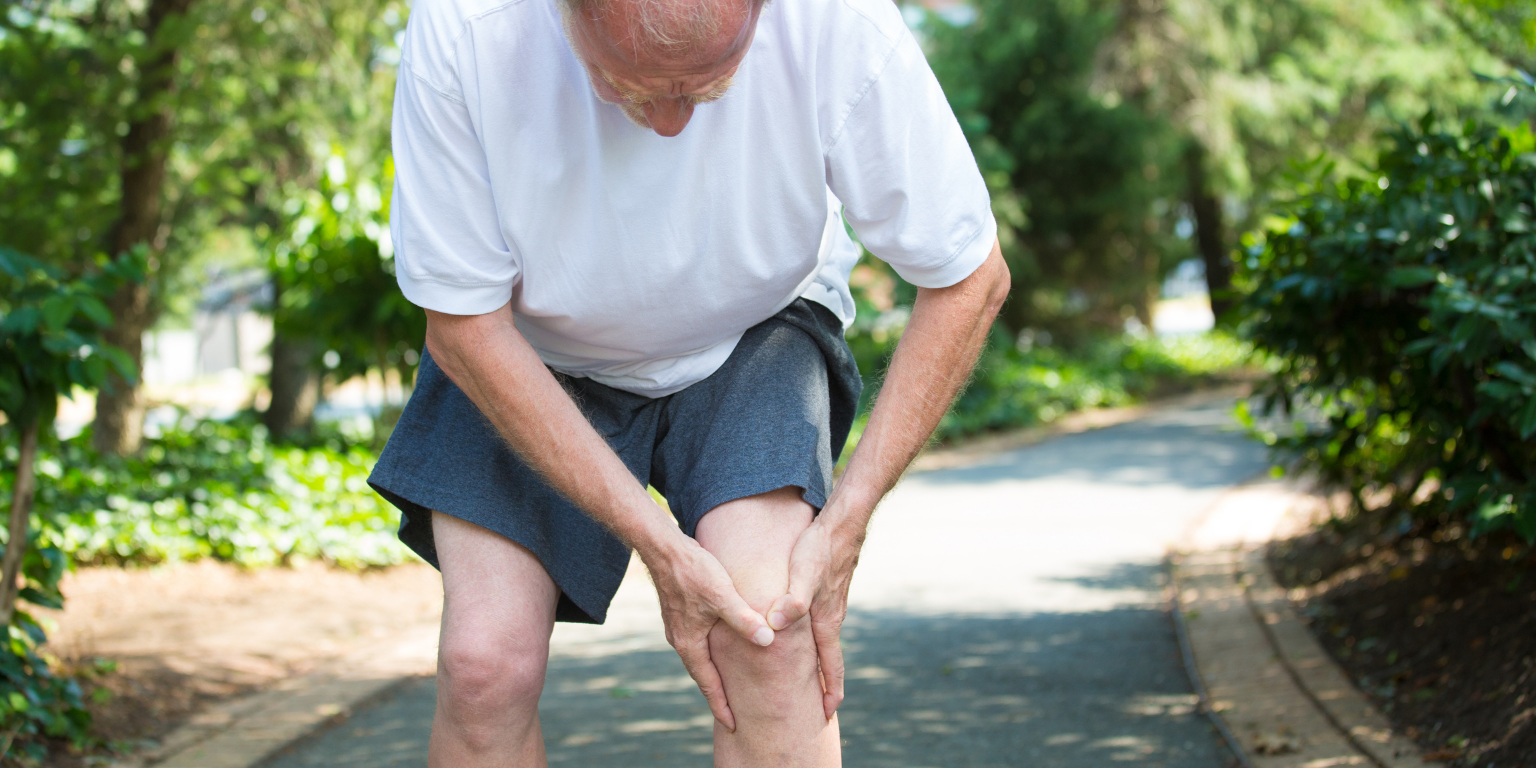Running is one of the oldest and accessible forms of exercise—it’s readily available and able to be done in any type of shoes, or even barefoot. Today, there is an increasing number of local races being held around the world, ranging from 5k to ultra-marathons. That means more people have to deal with runner’s knee, also known as patellofemoral pain syndrome.
We’ll go over the characteristics that put you more at risk for runner’s knee, how running can lead to knee pain, and how physical therapy can help.

Let’s say you have signed up for one of the upcoming 5K events in the California Central Valley.
There you are in the middle of your run and suddenly you begin to feel a nag in your knee. You finish the run and a short while later, the nag goes away. However, it returns the next run and the feeling’s intensity increases.
It’s natural to believe it will go away and continue to run. But this feeling could eventually make its way to every step you take and affect the way you do daily activities.
What is Runner’s Knee – Patellofemoral Pain Syndrome?
One of the most common injuries runners experience is runner’s knee, otherwise called patellofemoral pain syndrome. This is when you experience pain on or around the patella, which is the front of your knee. This condition comprises 62% of reported knee injuries.
How Running Can Lead to Knee Pain
Before getting into how you could develop runner’s knee, it’s important to understand some facts about running itself.
Running is a dynamic and repetitive sport with little variation of movement. This leads to consistent strain on the same muscles, tendons, and joints during the run—it may be more force than you think.
- About 2.5 times your body weight is exerted on your foot during running.
- As that load travels up the leg, a compression force of about 4 times your body weight is exerted on the patellofemoral joint in your knee.
For example, an individual running at a cadence of 160 steps per minute will experience a force of about 320 times his or her body weight on the knee per minute, or 19,200 times the body weight per hour. With the thickest articular cartilage in the body behind the patella, our bodies are conditioned to handle this load. However, continued load on this cartilage could lead to damage.
Studies show that knee pain isn’t experienced through chondromalacia, which is when your articular cartilage is frayed, so that is likely not the source of the pain. However, knee pain while running often comes from damage to the subchondral bone, synovial membrane, fat pad, and retinacular tissue in the knee.

Sources of Knee Pain While Running
There are a variety of lifestyle and running-related factors that may contribute to the onset of pain. Knee injuries occur when the load of your lifestyle and running exceed that of the tissue capacity.
We have grouped the sources of running knee pain in two categories: increased load and decreased capacity.
Increased Load
- Increased running speed
- Increased running mileage
- Changing terrain
- Increased uphill training
- Increased downhill training
- Changing footwear
- Changing running mechanics
- Increase in other activities
Decreased Capacity
- Increased stress or anxiety
- Decreased sleep
- Fatigue
- Depression
- Kinesiophobia – the fear of pain due to movement
- Changes in nutrition
- Systemic issues
- Decreased tissue tolerance

How Physical Therapy Can Help with Runner’s Knee
At PRO~PT, a therapist will perform a thorough subjective examination looking at the sources of knee pain listed above.
As we dive into your running and strength training history, we’ll look at whether you fell victim to the most common pitfalls of running—too fast, too much, and too soon, also known as the three big “toos.” We’ll also determine through an objective exam if there are any range-of-motion, strength, endurance, or mechanical faults that are leading to your pain.
One specific way we evaluate you is through a running analysis—we will film you running and slow it down to identify mechanical issues leading to your pain. Some common issues we find during this process are:
- Femoral adduction
- Femoral internal rotation
- Decreased forward trunk lean
After you and your therapist have identified all issues leading to your pain, we’ll begin your healing process. Your physical therapist will either develop a specialized strengthening program or help you make slight changes in your running mechanics that will lead to pain-free running. The best part is that we’ll never stop you from running! Our goal is to simply modify how you run to alleviate your pain.
Example of Good Running to Prevent Runner’s Knee
Do you or someone you know have pain in their knees when running or jumping? Contact one of our clinics and let your road to recovery begin.
Whether you are unsure of what shoes to buy, what type of runs to join, or what stretches and strength-building exercises to do to avoid injuries, we feature valuable information and advice on our Facebook and Instagram pages.







